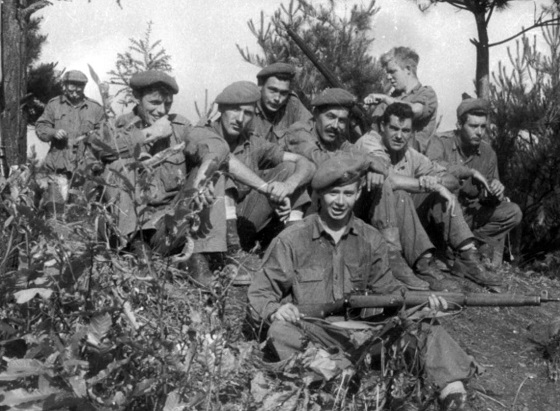Alberta
Update 12: NW AB Fires 6:30 pm, June 2 – Re-entry plans announced for northwest Alberta communities.

June 02, 2019
Beginning Monday at 10 a.m., residents can return to High Level, the surrounding areas of Mackenzie County and the Dene Tha’ First Nation communities of Bushe River, Meander River and Chateh.
Returning residents will be under an evacuation alert and should be prepared to leave on short notice if conditions change.
The following communities remain on evacuation alert:
- Town of Slave Lake
- MD of Lesser Slave Lake, including Old Smith Highway, Mitsue, Poplar Lane, Fawcett Lake, Eben Road and Bayer Road
- Peerless Lake area of Peerless Trout First Nation
- Town of Manning and some surrounding areas
- Mackenzie County, north of the Peace River to Township Road 1110, west of Range Road 120, and east of Highway 35 south of High Level; and south of the Peace River to Township Road 1040, west of Range Road 120 and east of Steep Hill Creek
Mandatory evacuations remain in place for:
- Paddle Prairie Metis Settlement
- Keg River, Carcajou, and all residents from the northern border of the County of Northern Lights to Township Road 922 (Notikewin Road)
- Bigstone Cree Nation
- Wabasca No. 166
- Parts of the MD of Opportunity No. 17
- Hamlet of Wabasca – Desmarais
- Hamlet of Sandy Lake
- Chipewyan Lake Village
- Bigstone Cree Nation
- Steen River
- The Trout Lake area of Peerless Trout First Nation
- MD of Lesser Slave River
- Hamlet of Marten Beach
Current situation
- Chuckegg Creek wildfire, southwest of High Level, is about 280,000 hectares.
- Jackpot Creek wildfire, approximately 11 km north of Lutose, is about 24,700 hectares.
- McMillan Wildfire Complex, southwest of Bigstone Cree Nation, is more than 212,386 hectares.
- Battle Wildfire Complex in Peace River is about 53,900 hectares.
- Provincial resources on the ground include more than 2,300 wildland and structural firefighters and staff, approximately 228 helicopters and 28 air tankers and heavy equipment.
- Residents should check Alberta Emergency Alerts for more detailed and frequently updated information.
- Approximately 11,000 people have been evacuated.
- People driving in fire-affected areas should carry enough fuel, as it may not be readily available.
Visit emergency.alberta.ca for detailed and frequently updated information.
Air quality
- Smoke is causing poor air quality and reducing visibility.
- Much of northern Alberta is under a special air quality statement.
- Individuals may experience symptoms, such as increased coughing, throat irritation, headaches or shortness of breath. Children, seniors and those with cardiovascular or lung disease, such as asthma, are especially at risk.
- If you experience breathing difficulties, find an indoor place that’s cool and ventilated.
- Alberta Wildfire recommends checking FireSmoke.ca to find out where the smoke is coming from.
Financial supports
- Evacuees should check alberta.ca/emergency for updates on evacuation payment eligibility.
- Evacuees in need of financial assistance for immediate needs can apply for an Income Support program emergency needs allowance. This benefit may cover your accommodation, clothing and other urgent needs. Please call 1-877-644-9992 for more information.
- You may qualify for the evacuation payment if you were:
- living, working or vacationing in the affected area
- forced to leave due to an evacuation order
- forced to leave your residence (primary, working or vacationing) due to a mandatory evacuation order – current communities include:
- High Level
- Paddle Prairie
- Bushe River
- Chateh
- Meander River
- paid for most of your costs to evacuate
- Albertans who qualify will receive $1,250 and $500 for each dependent child under 18 living in the same home when the evacuation order was given.
- Applications methods:
- Apply online through the MyAlberta Evacuation Payment application using a smart phone, device or desktop. Interac e-transfers may take 24 hours to process.
- Apply in–person at any Alberta Supports Centre.
- Before going to an Alberta Supports Centre, please check the status of the area to ensure it is safe.
- If you are visiting an Alberta Support Centre, please bring:
- Photo identification
- Proof of residence or presence in the community
- Identification for partner/spouse and/or dependents children if claiming for them
- If you have questions, contact Alberta Supports: 1-877-644-9992.
- More than 6,600 individuals have received evacuee support, and more than $6.8 million has been distributed.
Reception and call centres
- Reception centres are open at:
- Slave Lake Legacy Centre (400 6 Avenue NE)
- High Prairie Gordon Buchanan Centre (5413 49 Street)
- Grande Prairie Regional College (10726 106 Avenue)
- Peace River Misery Mountain Ski Hill (10408 89 Street)
- La Crete Heritage Centre (25411 Township Road 1060, south of La Crete)
- Fort Vermilion Community Cultural Complex (5001 44 Avenue)
- Dene Wellness Centre (In K’atl’ Odeeche First Nation, 17 kilometres east of Hay River)
- Calling Lake Recreation Centre (2870 Central Drive)
- Back Lakes Arena (249 Red Earth)
- Evacuation reception centre hours can be found at emergency.alberta.ca.
- Government’s call centre at 310-4455 will be open from 8 a.m. to 8 p.m. Saturday and Sunday.
Highway updates
- To stay informed on all road closures due to the wildfires, visit 511.Alberta.ca or download the mobile app.
- Highway 35 from High Level to the Northwest Territories border is open at this time. Emergency management officials are monitoring highway and wildfire conditions closely. Authorities may close the highway without warning if conditions change.
- The following highways are closed:
- Highway 35, south of High Level to 2nd Street within the Town of Manning.
- Highway 692 near Hawk Hills.
- Highway 695, East and West, including Keg River.
- Highway 697, from Highway 35 to Range Road 185, west of La Crete.
- Highway 813 from Wabasca to Sandy Lake closed.
- Highway 754 from Highway 88 to Wabasca.
- The La Crete Ferry is closed.
Insurance information
- Most home and tenant insurance policies provide coverage for living expenses during an evacuation.
- Evacuees should retain all of their receipts for food, accommodation and other related expenses to provide to their insurer.
- Albertans can contact the Insurance Bureau of Canada at 1-844-227-5422 or by email at [email protected]. Information about insurance coverage is available online at ibc.ca/ab/disaster/alberta-wildfire.
Justice and legal matters
- All High Level, Fort Vermillion and Chateh court matters will be heard in Peace River. Call the Peace River court at 780-624-6256 for inquiries on matters scheduled for this week and next. Matters will be held by phone, if necessary, but you must register to do so.
- In many cases, tickets can be paid online. For any other inquiries requiring direction from the court about Peace River and High Level court matters, call the Peace River court at 780-624-6256.
- If you have an appointment with a probation officer in an evacuated area, report to the community corrections office nearest you. Please call 780-427-3109 (to call toll free, first dial 310-0000) for information.
- If you are an intermittent server in an evacuated area, call the Peace River Correctional Centre at 780-624-5480 (to call toll-free, first dial 310-0000).
Education
- School officials in fire-impacted areas will address the impacts of disruption on the academic program and school year. Students or their guardians should watch for online or direct communications from local school authorities about specific changes.
Provincial park closures
- Lesser Slave Lake Provincial Park, Twin Lakes Provincial Recreation Area, Moose Lake Provincial Park and Notikewin Provincial Park are closed.
- Calling Lake Provincial Park campground is closed to accommodate evacuees from the M.D. of Opportunity. Any campground reservations will be refunded. The boat launch is available for public day use, including for anglers participating in the fishing season starting June 1.
Boil water advisory
- Boil water advisories remain in place for Meander River (Dene Tha’ First Nation) and North Tall Cree (Little Red River Cree Nation). Although power has been restored, the boil water advisories will remain in place until water testing is complete.
Health
- Mental health support is available by calling Alberta’s 24-hour help line at 1-877-303-2642.
- Alberta Health Services is providing support to the reception centres. These supports include addiction and mental health, Indigenous health liaisons, nursing, emergency medical services, public health and home care.
- Alberta Health Services has relocated acute patients and continuing care residents from La Crete and Fort Vermilion to health facilities in Edmonton and surrounding communities.
- The emergency department at St. Theresa General Hospital in Fort Vermilion remains open.
Pets and livestock
- High Level animal control has collected household pets that have been left behind. For questions regarding your pets, please call 780-926-2201.
- For evacuees in the Wabasca area, please fill out an online form on the Alberta Animal Disaster Response Facebook group, or text 403-869-4964 and provide your name, contact number, number of animals missing, where they were last seen, and a brief description of your pet.
- The County of Northern lights will allow residents to enter property to look after livestock between 7 a.m. and 10 p.m. Residents must first go to the County Office to register for the temporary access pass.
Electricity and Natural Gas Billing
- High Level and area residential, farm, irrigation and small commercial electricity and natural gas customers affected by the evacuation will not be billed for the period covered by the order.
Donations and volunteers
- High Level is not accepting donations or volunteers at this time.
- The Town of Slave Lake has set up an online form for offers.
- Check the Mackenzie County Facebook page for an up-to-date list of donations needed and drop-off locations.
Canada Post
Mail service has been suspended in:
- High Level, Meander River, Chateh, Paddle Prairie, Keg River
- High Level evacuees can pick up mail from the Slave Lake Post Office
- Chateh evacuees can pick up mail at the Fort Vermilion Post Office
- Meander River evacuees can pick up mail at the La Crete Post Office
Mail service has been restored in:
- Fort Vermilion, La Crete, Rainbow Lake, Zama City
If you require urgent access to critical items, such as medications and passports, please call 1-800-267-1177. You may be able to arrange for pick up at the Slave Lake Post Office (100 2 Street NE).
Mail will be held at the Edmonton depot until mail service resumes.
- Check the Canada Post website for updates.
Income Support, Alberta Supports and AISH
- Evacuees receiving the Assured Income for the Severely Handicapped or the Income Support program by cheque rather than electronic deposit can pick up their cheque at their nearest Alberta Supports Centres.
- If you are in La Crete, you can pick up your cheque at the local reception centre. If you receive your benefits via direct deposit, your payment will be deposited as usual.
- For information on child intervention and child care, call 1-800-638-0715.
- Persons with developmental disabilities, their families or contracted service providers can call the nearest Alberta Supports Centre for assistance.
- For additional information on social benefits, or to find a list of Alberta Supports Centres, call 1-877-644-9992 province-wide between 7:30 a.m. and 8 p.m., Monday to Friday.
- Employment insurance: evacuees can visit Service Canada online to apply at www.canada.ca/en/services/benefits/ei.html. Use code 4812014812201900.
Health card, driver’s licences, ID cards, birth certificate
- To get a replacement Health Care Insurance Card call 780-427-1432 or toll free at 310-0000 and then 780-427-1432 when prompted. Your Alberta Personal Health Card can be mailed to a temporary address.
- If driver’s licences, identification cards, and/or birth certificates were left behind during the evacuation, replacement cards and certificates can be ordered free of charge at a registry agent.
Public information
- You can call 310-4455 for more information.
Related information
Alberta
Federal budget: It’s not easy being green

From Resource Works
Canada’s climate rethink signals shift from green idealism to pragmatic prosperity.
Bill Gates raised some eyebrows last week – and probably the blood pressure of climate activists – when he published a memo calling for a “strategic pivot” on climate change.
In his memo, the Microsoft founder, whose philanthropy and impact investments have focused heavily on fighting climate change, argues that, while global warming is still a long-term threat to humanity, it’s not the only one.
There are other, more urgent challenges, like poverty and disease, that also need attention, he argues, and that the solution to climate change is technology and innovation, not unaffordable and unachievable near-term net zero policies.
“Unfortunately, the doomsday outlook is causing much of the climate community to focus too much on near-term emissions goals, and it’s diverting resources from the most effective things we should be doing to improve life in a warming world,” he writes.
Gates’ memo is timely, given that world leaders are currently gathered in Brazil for the COP30 climate summit. Canada may not be the only country reconsidering things like energy policy and near-term net zero targets, if only because they are unrealistic and unaffordable.
It could give some cover for Canadian COP30 delegates, who will be at Brazil summit at a time when Prime Minister Mark Carney is renegotiating his predecessor’s platinum climate action plan for a silver one – a plan that contains fewer carbon taxes and more fossil fuels.
It is telling that Carney is not at COP30 this week, but rather holding a summit with Alberta Premier Danielle Smith.
The federal budget handed down last week contains kernels of the Carney government’s new Climate Competitiveness Strategy. It places greater emphasis on industrial strategy, investment, energy and resource development, including critical minerals mining and LNG.
Despite his Davos credentials, Carney is clearly alive to the fact it’s a different ballgame now. Canada cannot afford a hyper-focus on net zero and the green economy. It’s going to need some high octane fuel – oil, natural gas and mining – to prime Canada’s stuttering economic engine.
The prosperity promised from the green economy has not quite lived up to its billing, as a recent Fraser Institute study reveals.
Spending and tax incentives totaling $150 billion over a decade by Ottawa, B.C, Ontario, Alberta and Quebec created a meagre 68,000 jobs, the report found.
“It’s simply not big enough to make a huge difference to the overall performance of the economy,” said Jock Finlayson, chief economist for the Independent Contractors and Business Association and co-author of the report.
“If they want to turn around what I would describe as a moribund Canadian economy…they’re not going to be successful if they focus on these clean, green industries because they’re just not big enough.”
There are tentative moves in the federal budget and Climate Competitiveness Strategy to recalibrate Canada’s climate action policies, though the strategy is still very much in draft form.
Carney’s budget acknowledges that the world has changed, thanks to deglobalization and trade strife with the U.S.
“Industrial policy, once seen as secondary to market forces, is returning to the forefront,” the budget states.
Last week’s budget signals a shift from regulations towards more investment-based measures.
These measures aim to “catalyse” $500 billion in investment over five years through “strengthened industrial carbon pricing, a streamlined regulatory environment and aggressive tax incentives.”
There is, as-yet, no commitment to improve the investment landscape for Alberta’s oil industry with the three reforms that Alberta has called for: scrapping Bill C-69, a looming oil and gas emissions cap and a West Coast oil tanker moratorium, which is needed if Alberta is to get a new oil pipeline to the West Coast.
“I do think, if the Carney government is serious about Canada’s role, potentially, as an global energy superpower, and trying to increase our exports of all types of energy to offshore markets, they’re going to have to revisit those three policy files,” Finlayson said.
Heather Exner-Pirot, director of energy, natural resources and environment at the Macdonald-Laurier Institute, said she thinks the emissions cap at least will be scrapped.
“The markets don’t lie,” she said, pointing to a post-budget boost to major Canadian energy stocks. “The energy index got a boost. The markets liked it. I don’t think the markets think there is going to be an emissions cap.”
Some key measures in the budget for unlocking investments in energy, mining and decarbonization include:
- incentives to leverage $1 trillion in investment over the next five years in nuclear and wind power, energy storage and grid infrastructure;
- an expansion of critical minerals eligible for a 30% clean technology manufacturing investment tax credit;
- $2 billion over five years to accelerate critical mineral production;
- tax credits for turquoise hydrogen (i.e. hydrogen made from natural gas through methane pyrolysis); and
- an extension of an investment tax credit for carbon capture utilization and storage through to 2035.
As for carbon taxes, the budget promises “strengthened industrial carbon pricing.”
This might suggest the government’s plan is to simply simply shift the burden for carbon pricing from the consumer entirely onto industry. If that’s the case, it could put Canadian resource industries at a disadvantage.
“How do we keep pushing up the carbon price — which means the price of energy — for these industries at a time when the United States has no carbon pricing at all?” Finlayson wonders.
Overall, Carney does seem to be moving in the right direction in terms of realigning Canada’s energy and climate policies.
“I think this version of a Liberal government is going to be more focused on investment and competitiveness and less focused around the virtue-signaling on climate change, even though Carney personally has a reputation as somebody who cares a lot about climate change,” Finlayson said.
“It’s an awkward dance for them. I think they are trying to set out a different direction relative to the Trudeau years, but they’re still trying to hold on to the Trudeau climate narrative.”
Pictured is Mark Carney at COP26 as UN Special Envoy on Climate Action and Finance. He is not at COP30 this week. UNRIC/Miranda Alexander-Webber
Resource Works News
Alberta
ChatGPT may explain why gap between report card grades and standardized test scores is getting bigger

From the Fraser Institute
By Paige MacPherson and Max Shang
In Alberta, the gap between report card grades and test/exam scores increased sharply in 2022—the same year ChatGPT came out.
Report card grades and standardized test scores should rise and fall together, since they measure the same group of students on the same subjects. But in Alberta high schools, report card grades are rising while scores on Provincial Achievement Tests (PAT) and diploma exams are not.
Which raises the obvious question—why?
Report card grades partly reflect student performance in take-home assignments. Standardized tests and diploma exams, however, quiz students on their knowledge and skills in a supervised environment. In Alberta, the gap between report card grades and test/exam scores increased sharply in 2022—the same year ChatGPT came out. And polling shows Canadian students now rely heavily on ChatGPT (and other AI platforms).
Here’s what the data show.
In Alberta, between 2016 and 2019 (the latest year of available comparable data), the average standardized test score covering math, science, social study, biology, chemistry, physics, English and French language arts was just 64, while the report card grade 73.3—or 14.5 per cent higher. Data for 2020 and 2021 are unavailable due to COVID-19 school closures, but between 2022 and 2024, the gap widened to 20 per cent. This trend holds regardless of school type, course or whether the student was male or female. Across the board, since 2022, students in Alberta high schools are performing significantly better in report card grades than on standardized tests.
Which takes us back to AI. According to a recent KPMG poll, 73 per cent of students in Canada (high school, vocational school, college and university) said they use generative AI in their schoolwork, an increase from the previous year. And 71 per cent say their grades improved after using generative AI.
If AI is simply used to aid student research, that’s one thing. But more than two-thirds (66 per cent) of those using generative AI said that although their grades increased, they don’t think they’re learning or retaining as much knowledge. Another 48 per cent say their “critical thinking” skills have deteriorated since they started using AI.
Acquiring knowledge is the foundation of higher-order thinking and critical analysis. We’re doing students a deep disservice if we don’t ensure they expand their knowledge while in school. And if teachers award grades, which are essentially inflated by AI usage at home, they set students up for failure. It’s the academic equivalent of a ski coach looking at a beginner and saying, “You’re ready for the black diamond run.” That coach would be fired. Awarding AI-inflated grades is not fair to students who will later struggle in college, the workplace or life beyond school.
Finally, the increasing popularity of AI underscores the importance of standardized testing and diploma exams. And parents knew this even before the AI wave. A 2022 Leger poll found 95 per cent of Canadian parents with kids in K-12 schools believe it’s important to know their child’s academic performance in the core subjects by a fair and objective measure. Further, 84 per cent of parents support standardized testing, specifically, to understand how their children are doing in reading, writing and mathematics. Alberta is one of the only provinces to administer standardized testing and diploma exams every year.
Clearly, parents should oppose any attempt to reduce accountability and objective testing in Alberta schools.
-

 Agriculture1 day ago
Agriculture1 day agoBovaer Backlash Update: Danish Farmers Get Green Light to Opt Out as UK Arla Trial Abruptly Ends!
-

 Alberta1 day ago
Alberta1 day agoSchool defunding petition in Alberta is a warning to parents
-

 International1 day ago
International1 day agoBBC boss quits amid scandal over edited Trump footage
-

 Daily Caller1 day ago
Daily Caller1 day agoMcKinsey outlook for 2025 sharply adjusts prior projections, predicting fossil fuels will dominate well after 2050
-

 Agriculture22 hours ago
Agriculture22 hours agoFarmers Take The Hit While Biofuel Companies Cash In
-

 Business12 hours ago
Business12 hours agoCarney’s Floor-Crossing Campaign. A Media-Staged Bid for Majority Rule That Erodes Democracy While Beijing Hovers
-

 Frontier Centre for Public Policy23 hours ago
Frontier Centre for Public Policy23 hours agoNotwithstanding Clause Is Democracy’s Last Line Of Defence
-

 COVID-192 days ago
COVID-192 days agoMajor new studies link COVID shots to kidney disease, respiratory problems









